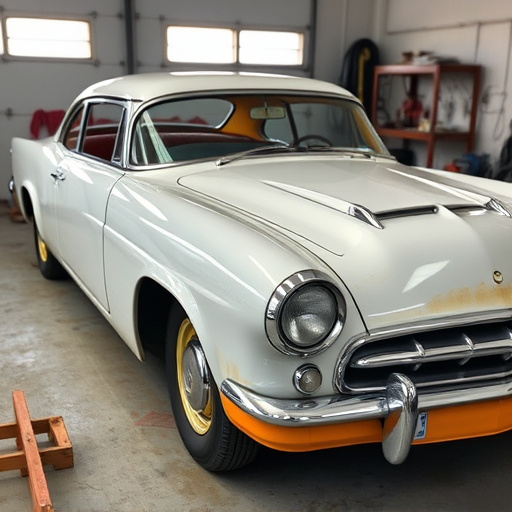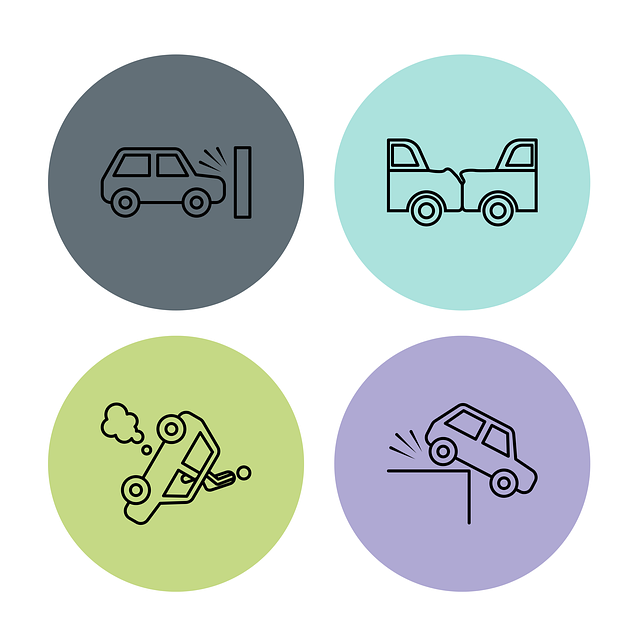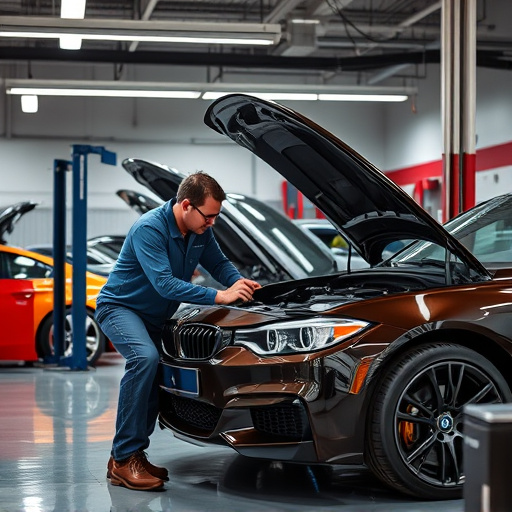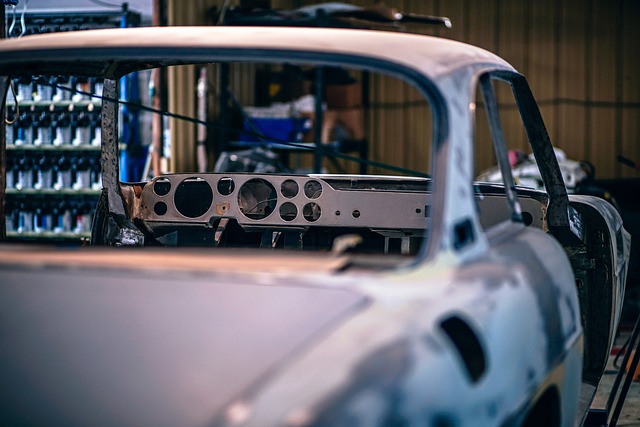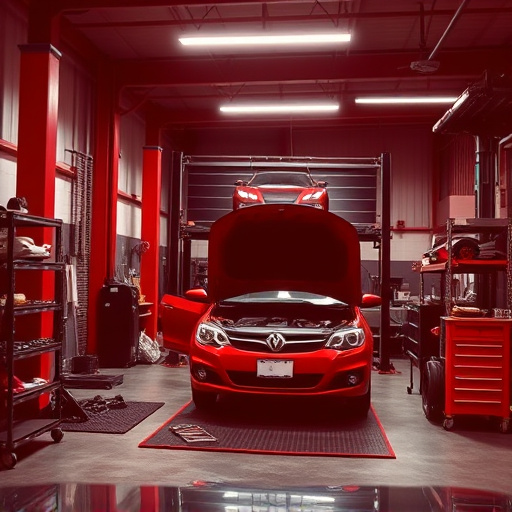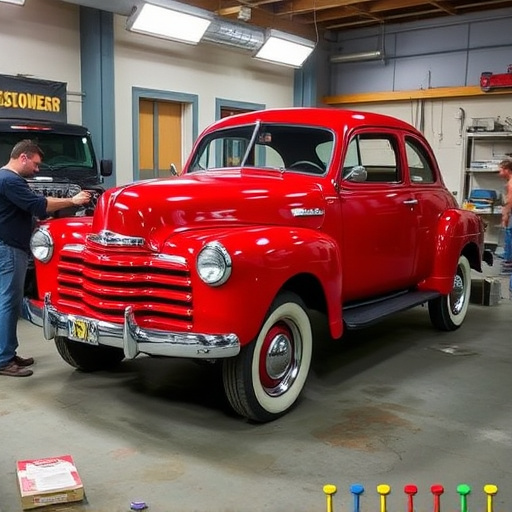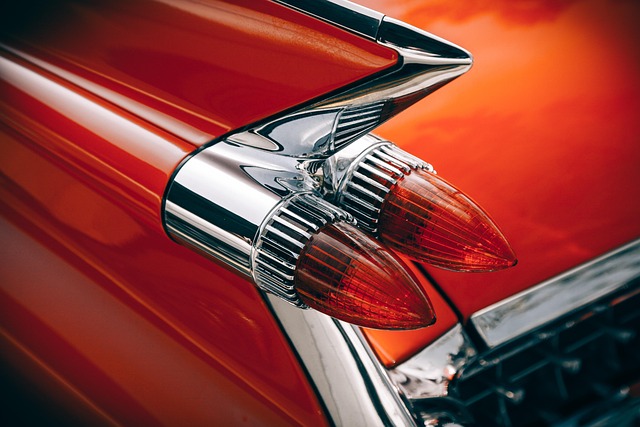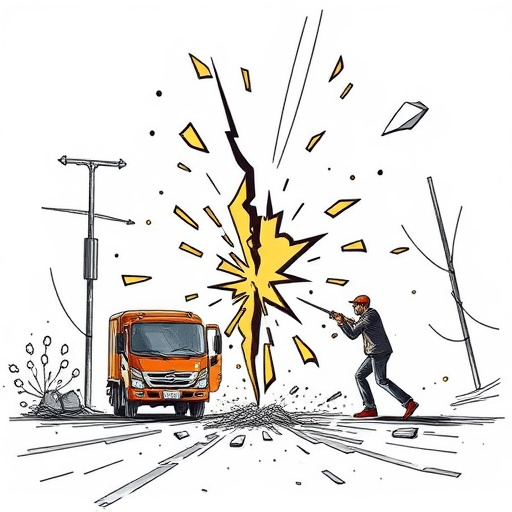Full panel replacement, a complex automotive repair, demands skilled professionals and precise techniques. Choosing the right adhesives and sealants, based on material, conditions, and stress factors, ensures long-lasting results. Proper sealant application, including surface prep and adherence to guidelines, prevents rust, enhances durability, and creates impenetrable barriers against moisture.
In the realm of automotive repairs, full panel replacement is a complex yet essential process. Adhesives and sealants play a crucial role in ensuring structural integrity and long-lasting results. This article delves into the critical aspects of full panel replacement work, focusing on understanding specific needs, selecting the right adhesives for optimal performance, and mastering sealant application techniques. By following these guidelines, professionals can revolutionize the process, enhancing both efficiency and the final quality of repairs.
- Understanding Full Panel Replacement Needs
- Choosing Adhesives for Optimal Performance
- Effective Sealant Application Techniques
Understanding Full Panel Replacement Needs

Full panel replacement is a specialized process within automotive repair services that demands precision and expertise. It involves the complete removal and reconstruction of a vehicle’s exterior panel, often due to damage or wear. This intricate procedure requires skilled auto maintenance professionals who understand the unique challenges of each make and model.
In many cases, full panel replacements are necessary when a vehicle’s body experiences significant denting, crumpling, or severe corrosion. Such issues can compromise structural integrity and the overall aesthetic appeal of the vehicle. Therefore, a well-executed full panel replacement not only restores the car’s exterior beauty but also ensures safety and longevity during daily driving.
Choosing Adhesives for Optimal Performance

When undertaking full panel replacement work, selecting the right adhesives and sealants is a critical step for achieving optimal performance and long-lasting results. The suitability of an adhesive depends on several factors unique to each project, including the types of materials being bonded (e.g., metal, plastic, fiberglass), environmental conditions, and expected exposure to stress or moisture. For instance, polyurethanes offer excellent strength and flexibility, making them ideal for complex automotive structures affected by vehicle collision repair.
Collision repair shops and collision centers often face challenges such as varying weather conditions and potential movement due to the intricate nature of full panel replacements. Adhesives with high bond strength, good chemical resistance, and fast curing properties can mitigate these issues. Additionally, considering the specific demands of the repair process, such as temperature ranges and humidity levels, ensures that chosen adhesives perform consistently throughout the project.
Effective Sealant Application Techniques

When conducting full panel replacement work in a vehicle body shop, mastering effective sealant application techniques is paramount. The process begins with thorough surface preparation, ensuring all panels are clean, dry, and free from any contaminants. This step is crucial for achieving a strong bond between the panel and the sealant.
Choosing the right sealant for each specific part of the frame straightening process is key to longevity and water resistance. For instance, using a high-quality automotive sealant designed for extreme conditions can prevent rust and corrosion, enhancing the durability of the repair. Proper application involves even distribution, adhering strictly to manufacturer guidelines on drying times. This ensures that all gaps and seams are sealed tightly, providing an impenetrable barrier against moisture and potential damage in auto body shops.
Adhering to best practices in full panel replacement work, from understanding specific needs to selecting the right adhesives and applying sealants effectively, ensures superior results. By choosing optimal adhesive solutions and mastering sealant application techniques, professionals can achieve durable bonds and airtight seals, enhancing the longevity and structural integrity of vehicle bodies. These strategies are key to successful full panel replacement, ultimately contributing to safer, more reliable vehicles on the road.
